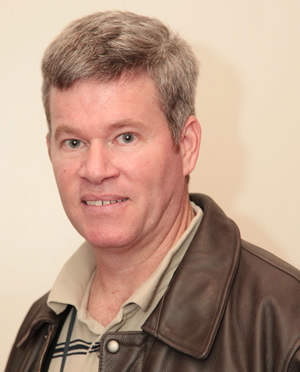Robert Owens: Project Coordinator
Design and Engineering
Facilities Support Services
Walt Disney World Parks and Resorts
3401 Vista BoulevardLake Buena Vista, FL 32830Ph: 407-939-4219
Abstract
“Supercalifragilisticexpialidocious”– Mary Poppins
What do you do when you have an infrared camera in your department and few understand what it does or have training to use it? What do you do when you have a limited infrared program with a large diverse property? Who has the need for infrared services in a large company like the Walt Disney World Resort? How are decisions made to spend for repairs and corrections? Where do you start your program?
Whether you work at a large company or are starting an infrared business; you need to ask these questions and understand the needs of your company or potential clients. Those are some of the questions that came up when we at Design and Engineering discovered we had an infrared camera.
Introduction
“Be Our Guest” – Beauty and the Beast
Design and Engineering provides Engineering and Architectural support for all of Walt Disney World Parks and Resorts. Our services range from condition assessments to design. From facilities to attractions, our group is made up of mechanical, electrical, and structural engineers, and subject matter experts. Facility Support Services (FSS) is a department within Design and Engineering that provides the infrared support to our internal customers. FSS provides rapid response services for the day to day operations of our local Parks and Resorts Engineering Departments as well as the Facility Projects Teams. We try to stay current with new technologies that can help drive efficiencies, and infrared seemed like a good tool for our toolbox.
Walt Disney World Parks and Resorts are not unlike some of the companies you work for or want to do work for. The Florida site is 43 square miles of parks, resorts, and maintenance support sites. Our first question was where to begin.
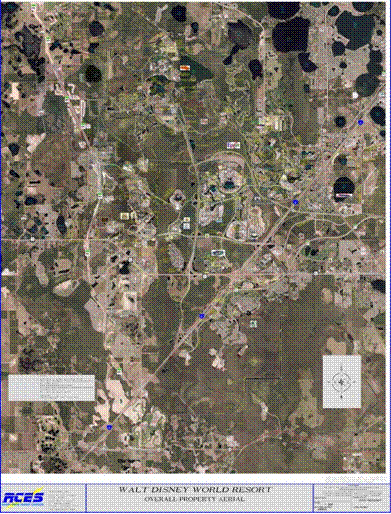
Aerial view of Walt Disney World Parks and Resorts, Florida
Training and Classes
“Following the Leader” – Peter Pan
The search for training began with a simple web search based on the camera that another department had owned…“Flir.com.” This led to other searches including “Infrared Training” which led to numerous sites, including Infraspection Institute.
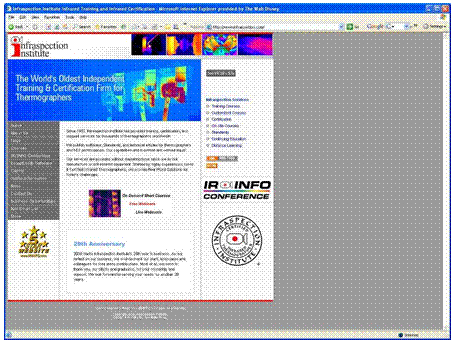
Infraspection Home Page
These sites listed opportunities for classes ranging from Level 1 Certification to individual classes focusing on e lectrical, building envelope, and other issues. Classroom based training ranged from one day classes to five day classes.
There are other web-based class opportunities with two to four hour classes on your personal computer, which would provide additional training for a job you might have limited knowledge on.
There are numerous conferences with typical and new topics being discussed throughout the day. H ighly qualified speakers with years of experience in the IR field are willing to share their knowledge with you. These seminars are great for networking and learning from the experts and others trying to start a business .
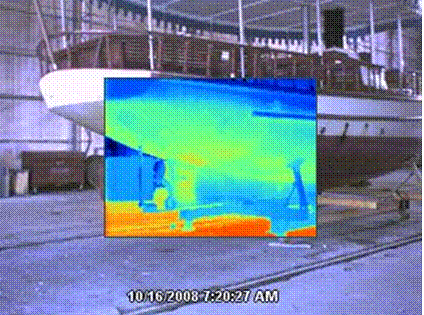
Explorer – Disney Transportation
Talk to your local materials distributors such as Grainger and Hughes Supply to s ee if they offer infrared cameras for sale. In some cases, when you show interest, you will get invited to seminars and be placed on sales lists to purchase discounted cameras and services.
Also, j oin blogs and get on e-mail lists that offer white papers as well as topics of the week.
Learn about your infrared equipment. U nderstanding how using a camera to take an IR image under varying conditions will increase your confidence . There are numerous learning opportunities , so t ake advantage of as many as you can. Quite a bit of your experience and knowledge comes from on the job training. Get out and try it. Confirm your findings with other tools to gain confidence. Experience and confidence requires some investment in time and resources, eventually flattening the learning curve. Be prepared when unexpected opportunities present themselves.
“I will be ready and then, perhaps, my chance will come” – John Wooden
Our Property
“It’s A Small World After All” – Magic Kingdom Attraction
Walt Disney World opened October 1, 1971. We have buildings that range from 38 years old to brand new. Their condition is never static, change is the only constant.
There are 4 Theme Parks and 22 Walt Disney owned Resorts on our 27,400 acres. We have 116 attractions and over 26,000 guest rooms on property.
There are approximately 6,200 buildings on property with 20.5 million square feet of roofing.
At the Magic Kingdom Theme Park alone, there are 12 electrical sub-stations and 135 distribution panels which feed approximately 1400 power and lighting panels.

Electrical Distribution Room
Our Transportation Department has 292 bus es, 466 water craft, and 12 monorails to transport our guests.
We have over 1600 chilled water air handling units on property ranging from 12 tons to 120 tons of cooling capacity.
There are more than 50 unique Icons on our property, each custom made for our parks and resorts, ranging in size from 3 feet to 40 feet in height.
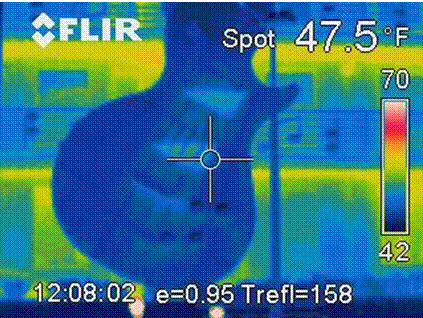
All Star Music Resorts – Guitar Icon
These are all fun facts, but each represents an opportunity for using the infrared camera. We are open 365 days of each year, so we need tools to be easy to use in order to quickly assess the condition of our assets.
You might not have this type of variety at your work location , but evaluate where your infrared needs are. Prioritize and look where you will get the best return on investment.
Current Infrared Equipment and Technology
“The Bare Necessities” – The Jungle Book
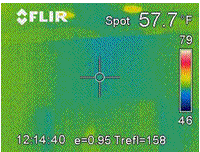
What equipment do you have? Do you plan on purchasing? Buying an infrared camera is not a purchase you want to make a mistake on.
The first camera at Design and Engineering was a FLIR E2 ThermaCAM purchased in 2003 for around $20,000. It was a small handheld style and the camera had very few features compared to the technologies offered today. The resolution was 160 x 120 and took jpeg images only . When the images were downloaded you could not make any adjustments to the images. In some cases, it was difficult to determine what you were looking at in your photo. You needed a digital image from a second camera to correspond with your IR image.
Our second camera was the Fluke TiR3 purchased in 2008. While not the most expensive camera available, this camera provided all of the features the Facilities Support Team were looking for. The most important was the higher resolution at 320 x 240. Also, the images could be changed after downloading by using supplied software. The camera also has the ability to phase between the infrared and digital images. This allows you to show the digital and IR image for reports which helps your clients better understand what they are looking at.
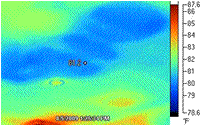
If you are purchasing a new camera, take your time and research the market. Cost is probably important, so look at the features and make sure you are getting what you need. Also, take some time and ask experts in the IR field. Purchasing an IR camera for your company or your own business is one of the most important decisions you may make.
Also, look at tools that will support your observations with the infrared camera. These could range from a Velometer, to a moisture meter, to a blower door tester, to ultrasound. You must be able to validate your observations because temperature or difference in temperature is a symptom and not typically the problem you are concerned with. This is often misunderstood and you need the entire “toolbox” to make a proper diagnosis. Having another tool or tools to support your findings makes your reporting more credible.
Sell Yourself
“Someone’s Waiting for You” – The Rescuers
“Failing to prepare is preparing to fail” John Wooden
With all of the opportunities existing, where do you start? As stated before, look for your best return on investment.
Use of infrared for electrical inspections is the most common practice. We have used our infrared camera to assist with some of these jobs but, at Walt Disney World, we currently have an independent contractor that performs those inspections for us. Due to sheer volume, this allows us to focus on the unique applications.
Our most common request is for building envelope inspections. Other unique or interesting applications we have successfully identified are moisture issues in our decorative building icons and in boat hulls. This has led to the creation of recurring annual jobs for using infrared scanning to verify the condition of facility components.
There are several departments on property with their own infrared cameras at this time. B est practice meetings are held regularly to discuss our experiences.
Determine which customers can utilize your service and set up meetings to demonstrate what infrared can do for them , but most importantly, m ake sure your clients understand what infrared is. Creating a program or starting a business may be very difficult , but having the proper tools and training will make that start much easier.
Evaluate Your Program
“You Can Fly, You Can Fly, You Can Fly”– Peter Pan
One of the common thoughts is that performing an infrared scan for building envelopes is time consuming and difficult. The temperature deltas are small and the conditions required to perform an accurate scan do not always occur on your first pass.
Using an IR camera has a learning curve for different applications. Make sure you are prepared when the job does not seem to be going your way.
It might require several attempts for the conditions to be right when doing an exterior building envelop scan.
Try out your infrared camera whenever you can. Look at everything. Set baselines for certain conditions. This way you will be able to compare scans from past investigations. Document your findings and keep your records organized so can review them at any time.
Our first statement in our paper was “What is the value of having an infrared program in any business?” Value can be defined in many ways, but I view it as providing accurate information and correctly identifying the issue.
Work done accurately is usually rewarded with requests for more work to be performed.
The point is to be persistent and consistent with using infrared a nd continuously evaluate your program as you build it. Ask “what is working and where are the opportunities ?”
Use all of your resources; Equipment, Training, Experience, Knowledge and prepare yourself to enter the Wonderful World of Infrared. Good Luck!
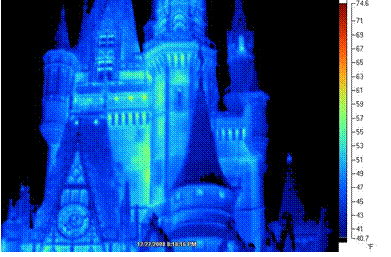
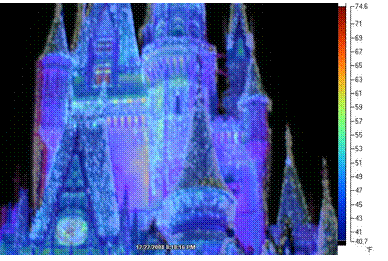
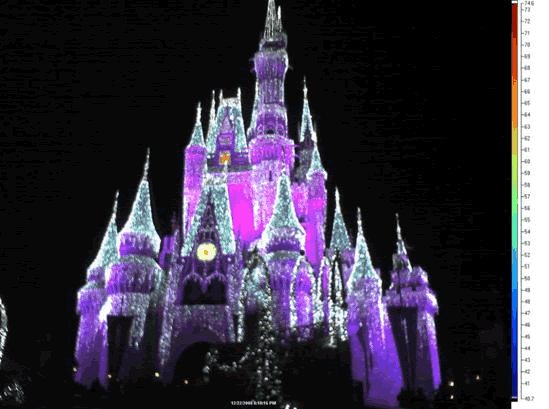
Visit out Sponsors:
Electrophysics




